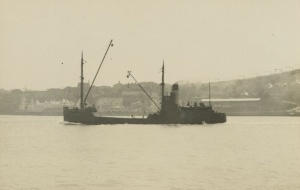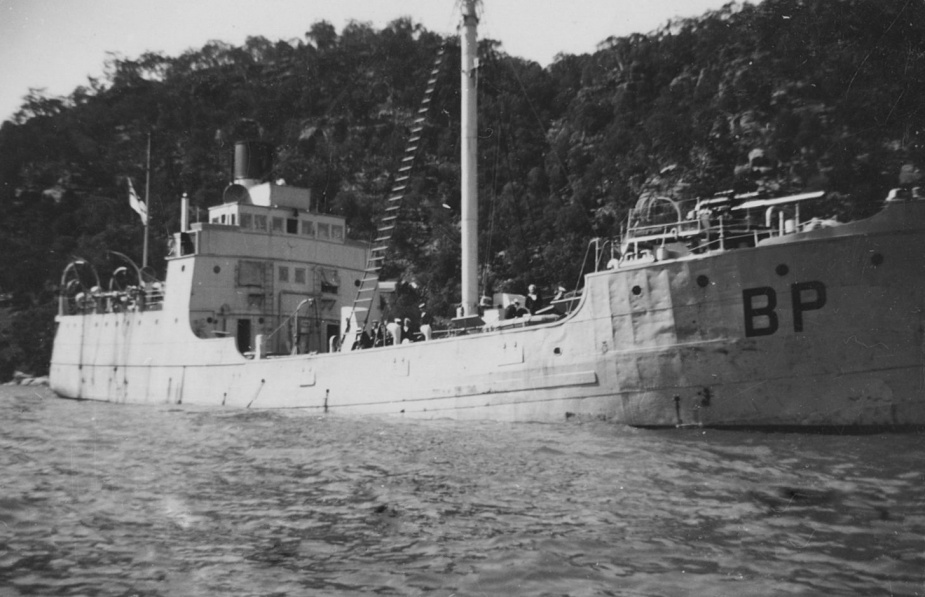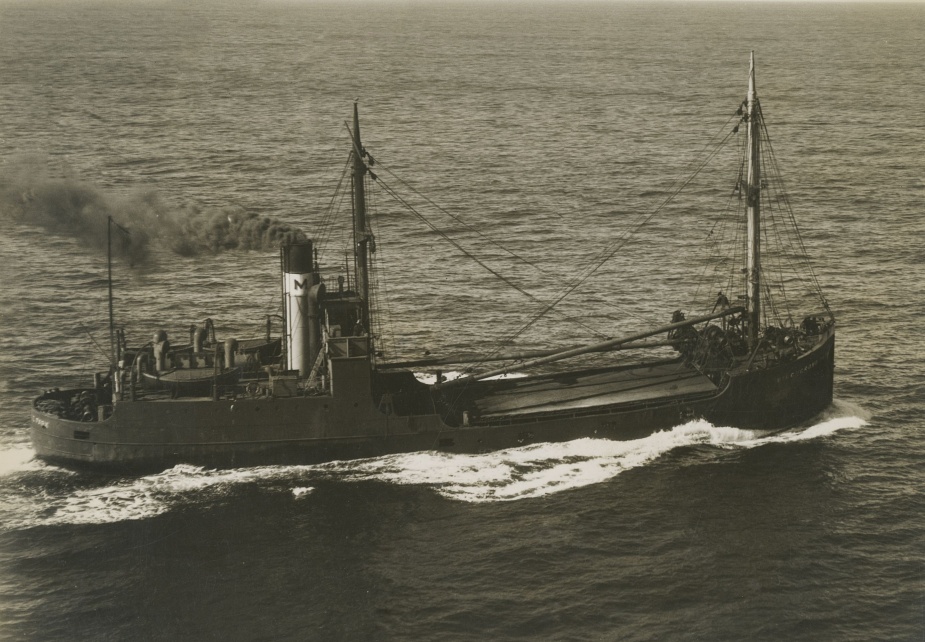HMAS Birchgrove Park
| Pennant |
BP |
|---|---|
| Builder |
J. Lewis and Sons Aberdeen, Scotland |
| Commissioned |
22 August 1941 |
| Dimensions & Displacement | |
| Length | 46.7 metres |
| Beam | 10.4 metres |
| Draught | 3.2 metres |
| Performance | |
| Speed | 10 knots |
| Complement | |
| Crew | 35 Officers and Sailors |
| Propulsion | |
| Machinery | Single Screw. Triple expansion steam engine developed 558 IHP |
| Armament | |
| Guns | 1 x 12 pounder gun, 2 x Oerlikon 20mm guns, 1 x .303 Vickers machine gun |
Birchgrove Park was a 640 ton collier built by J. Lewis and Sons of Aberdeen, Scotland, for Robert W. Miller & Co. Pty Ltd. The company operated a number of colliers, tugs, lighters and punts moving coal, blue metal and other heavy materiel to and from Sydney. The vessel was named after a park in Balmain, NSW. She arrived in Sydney in January 1931 and was soon operating along the coast from Newcastle in the north to Bulli in the south carrying coal to Sydney. On occasions she steamed as far south as Kiama to collect blue metal (gravel) for delivery to Sydney.
On 9 May 1941, she was requisitioned by the Royal Australian Navy (RAN) for conversion to an auxiliary minesweeper. HMAS Birchgrove Park was commissioned on 22 August 1941 under the command of Lieutenant John Henry Fewings, RANR (S) and became part of Mine Sweeping Group 50. She was fitted with a 12 pounder gun, two Oerlikon 20mm guns, a .303 Vickers machine gun and depth charges. She carried the identifying letters BP on her bow which helped identify the plethora of ‘ships taken up from trade’ that served in the RAN during World War II. The ex-collier was found to be unsuitable for minesweeping duties and in 1942 was converted to a stores carrier. Her complement consisted of four officers, five senior sailors and 26 ratings.
In August 1943 Birchgrove Park arrived in Port Moresby, under the command of Lieutenant Commander George Henry Roulston, RANR and for the next two years operated in New Guinea waters delivering stores to Australian units in various ports. She suffered her only war time casualty when Engine Room Artificer 4th Class Ian Farquharson died from Malaria, at Madang, on 29 December 1944. He was subsequently buried in Lae War Cemetery.
In early 1945 Birchgrove Park returned to Sydney and on 4 April 1945 she was decommissioned. She was re-commissioned on 25 July 1945, as a tender to HMAS Madang, and returned to stores carrying duties in New Guinea waters. Lieutenant Commander Roulston was once again in command.
Following the Japanese surrender in September 1945, Birchgrove Park took part in the post war re-occupation of Ambon (Netherlands East Indies). She joined the landing ship infantry HMAS Westralia and the corvette HMAS Glenelg who were embarking Australian prisoners of war which had survived captivity. It was here Birchgrove Park suffered her second fatal casualty when Petty Officer Walter Near was badly burned in an incident on board. He died from his injures on 12 October 1945 and was subsequently buried at Ambon War Cemetery.







